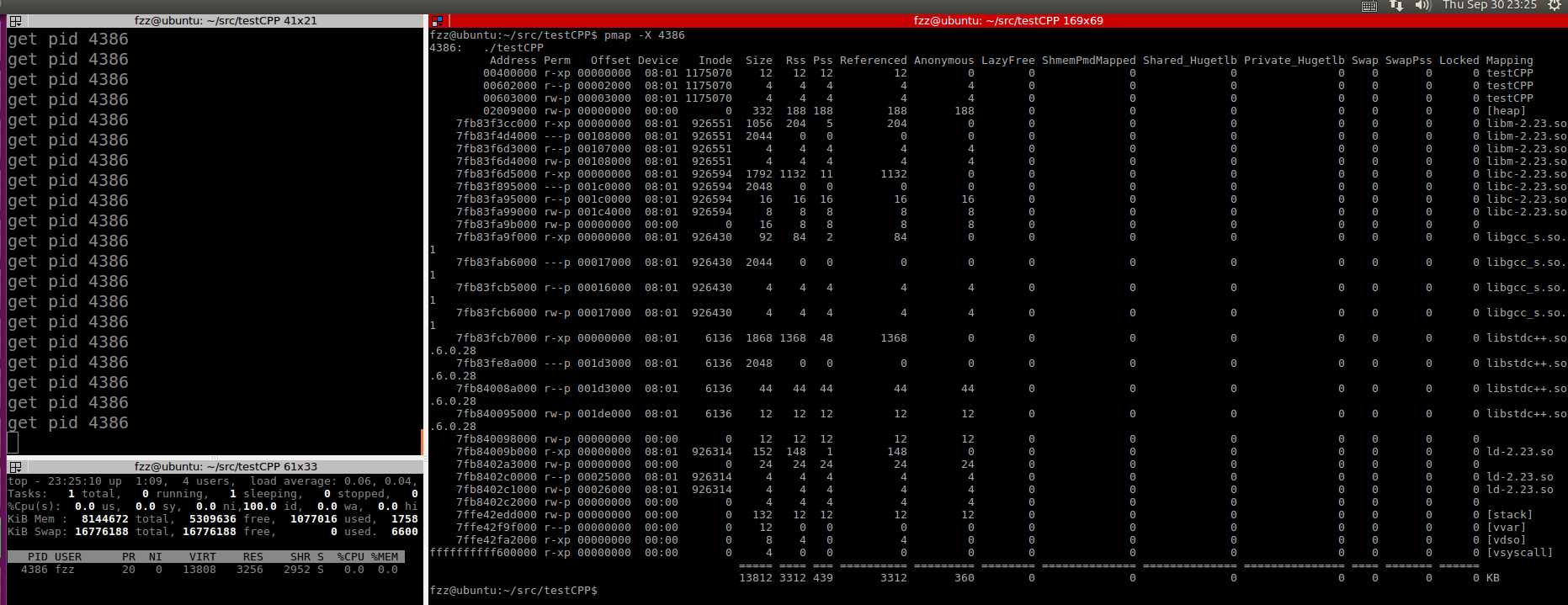Pmap Anon. I'm trying to locate where my memory has gone for a java process running in linux. Memory Mapping Description The pmap command reports the memory map of a process or processes. On comparing the output of pmap over time, I see multiple anon blocks getting added either at the top of heap or between two native libraries. Options The following options are supported: -a Prints anonymous and swap reservations for shared mappings. -F Force. The pmap Utility Finding the Process ID Using pmap The Extended Display Show Me Everything Memory Management is Complicated Finding out how much RAM a Linux process uses isn't a simple matter—especially when shared memory needs to be considered. As such, they have nothing to do with the Java heap (other than the fact that the entire heap should be stored in just such a block). Thankfully, the pmap command helps you make sense of it all. And below is from man proc about a /proc/ [pid]/maps file: What are the meaning of these blocs?

Pmap Anon. Options The following options are supported: -a Prints anonymous and swap reservations for shared mappings. -F Force. Process anon/locked mapping details /usr/bin/pmap -x [ -aslF ] [ pid From what I understand Anon, anonymous memory something which is not related. to any named file in filesystem. If the common name for the mapping is unknown, pmap displays [ anon. o Anonymous memory: Memory not relating to any named. object or file within the file system is reported. as [ anon ]. The -xoption displays additional information per mapping. Pmap Anon.
If the common name for the mapping is unknown, pmap displays [ anon. o Anonymous memory: Memory not relating to any named. object or file within the file system is reported. as [ anon ].
The pmap Utility Finding the Process ID Using pmap The Extended Display Show Me Everything Memory Management is Complicated Finding out how much RAM a Linux process uses isn't a simple matter—especially when shared memory needs to be considered.
Pmap Anon. And below is from man proc about a /proc/ [pid]/maps file: What are the meaning of these blocs? The pmap command displays common names for cer- tain known anonymous memory mappings, such as: [ heap ] The process heap. [ stack ] The process stack. Use the pmap command to explore how a process is mapped in memory to monitor or troubleshoot memory usage. Memory Mapping Description The pmap command reports the memory map of a process or processes. On comparing the output of pmap over time, I see multiple anon blocks getting added either at the top of heap or between two native libraries.
Pmap Anon.










